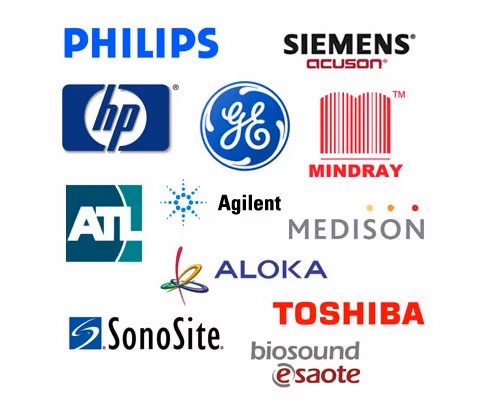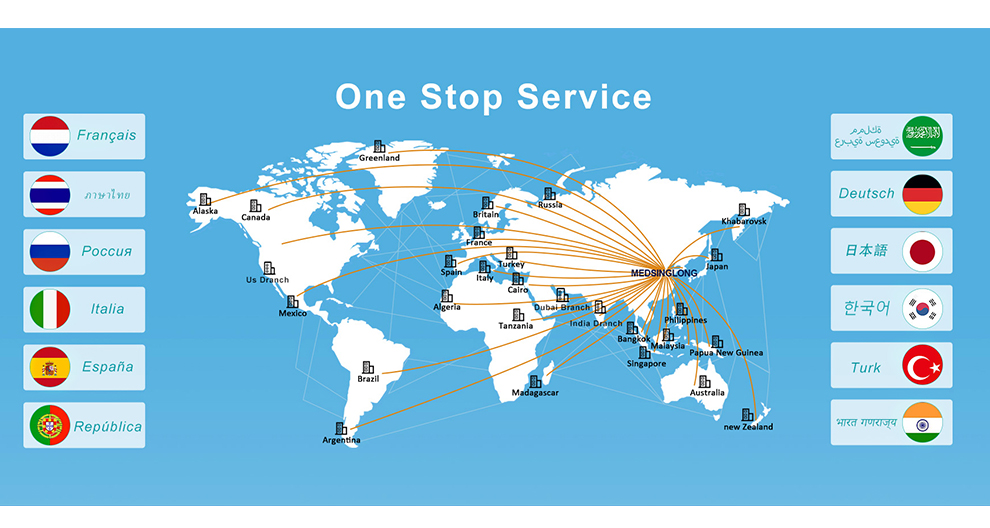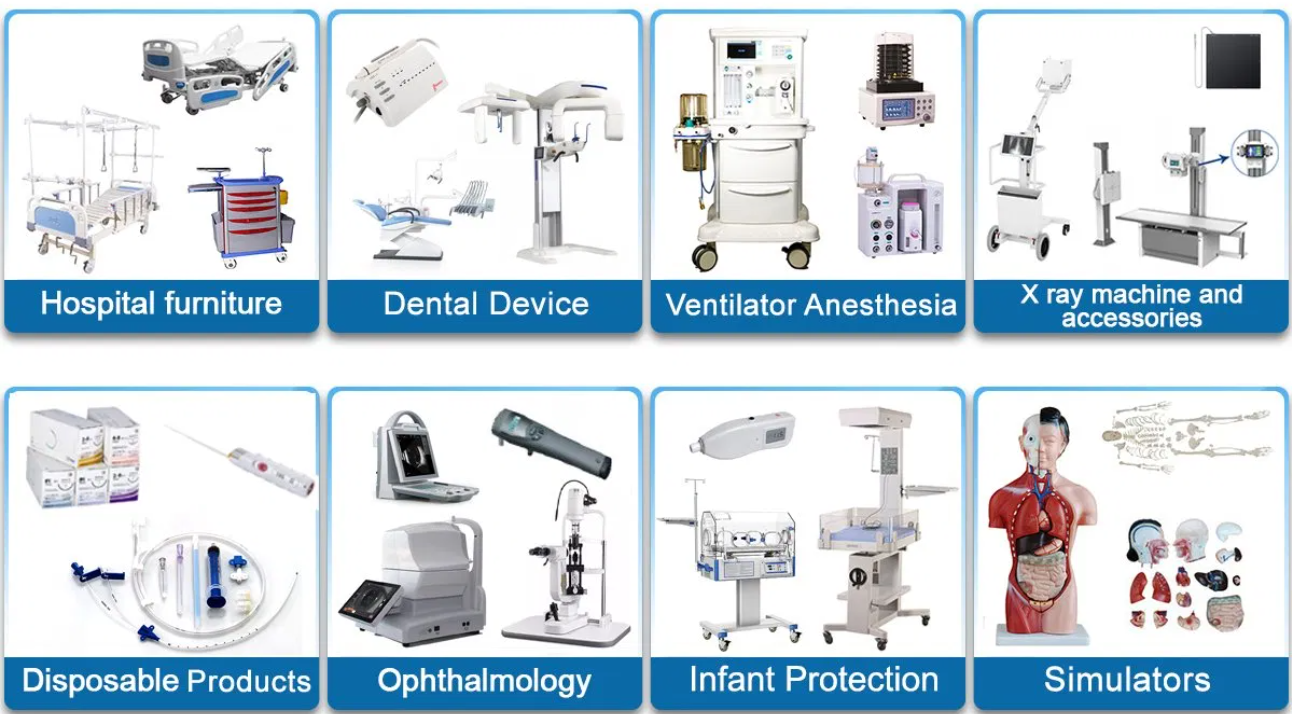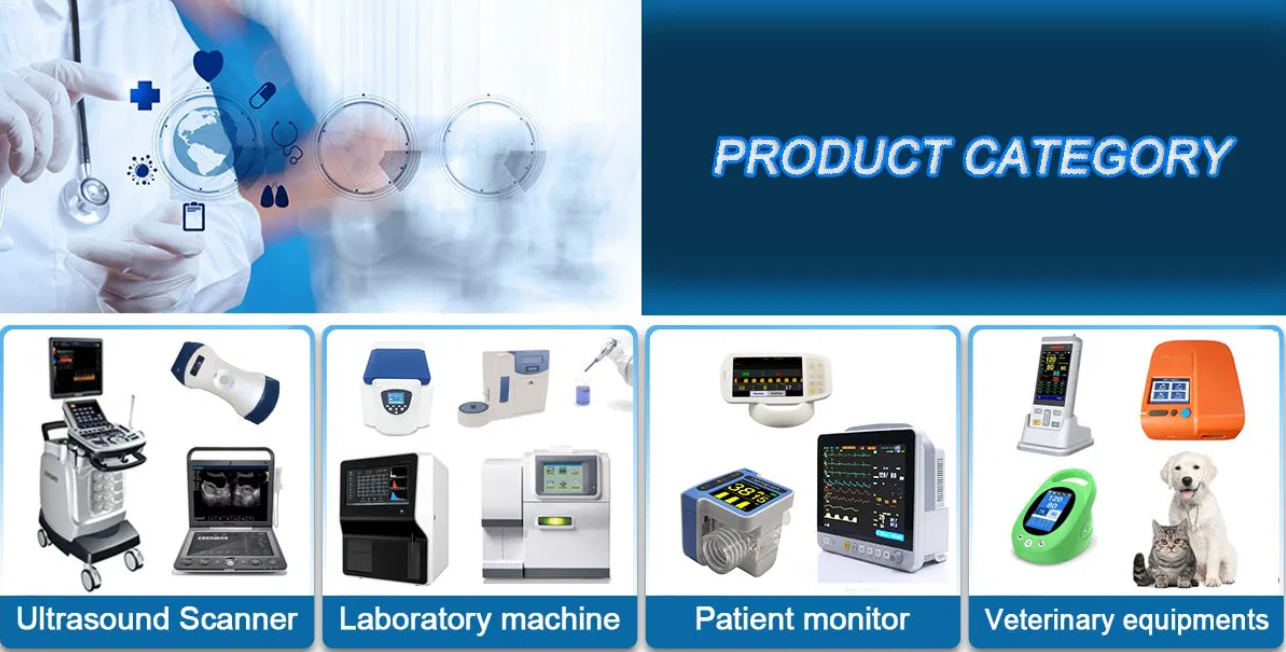Various spontaneous breathing support, e.g.: VC-MMV, SPN-PPS, Volume Support (VS), Pressure Support (PS)
Adults - 0.1 to 3.0 L, Pediatric - 0.02 to 0.3 L, Neonates 0.002 to 0.1 L
Volume controlled ventilation - VC-CMV, VC-SIMV, VC-AC, VC-MMV Adults - 0.5 to 98/min, Pediatric patients & Neonates - 0.5 to 150/min
Product Description
The Evita V300 is a scalable and versatile device which offers high ventilation quality. To meet and master the changing conditions and challenges of your everyday hospital work you need flexible equipment with versatile opportunities.
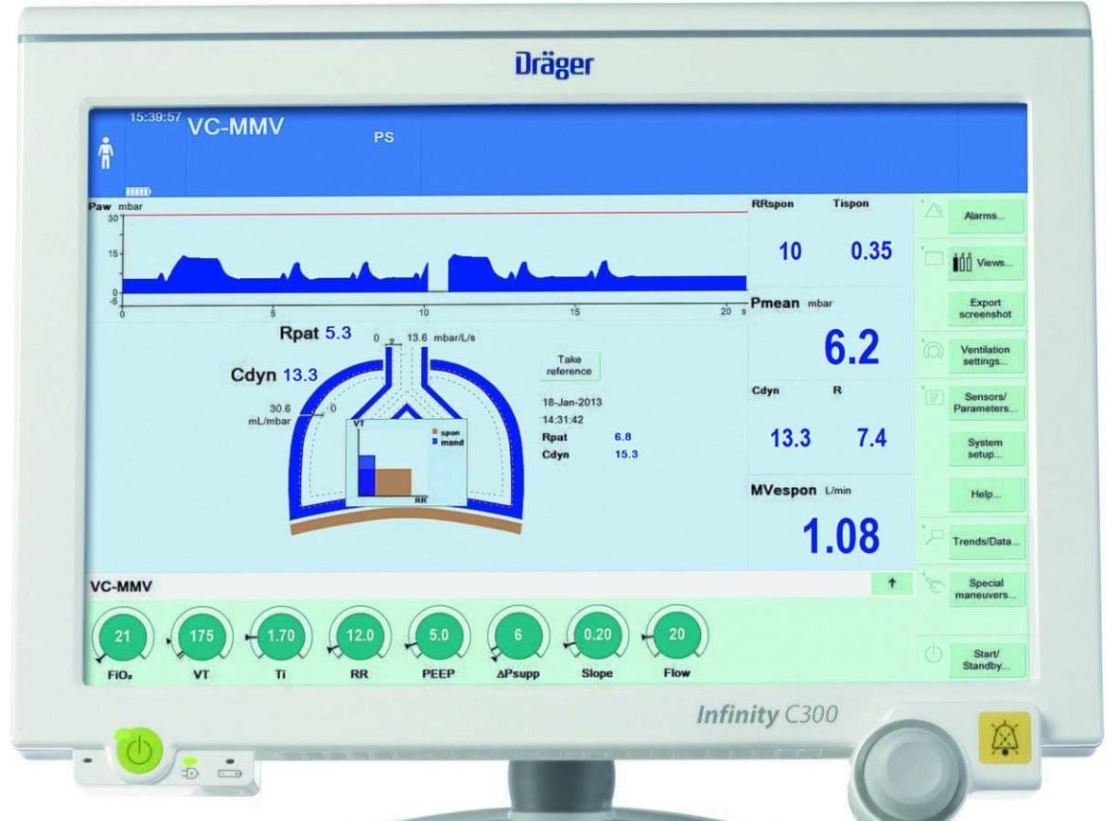
Benefits
• Ventilation for adults, children and neonates: invasive, non-invasive and with O2-therapy
• Volume- or pressure-controlled ventilation, spontaneous breathing
• Independence due to optional gas and power supply units: GS500 (compressed air), PS500 (power), TSU (gas)
• Flexible workstation integration by attaching to supply unit or trolley
• Individually adjustable configurations easily transferred via USB
• Context-sensitive help function facilitates setting the ventilation parameters and explains device functions
• Automatic tube compensation (ATC) compensates for artificial airway resistance
• AutoFlow in volume-controlled ventilation provides the tidal volume at the lowest possible pressure
• PC-APRV with optional AutoRelease enables spontaneous breathing with continuous positive airway pressure and short-term pressure relief
• Breathing deeply and freely thanks to AutoFlow®, Volume Guarantee (VG) or SPN-CPAP
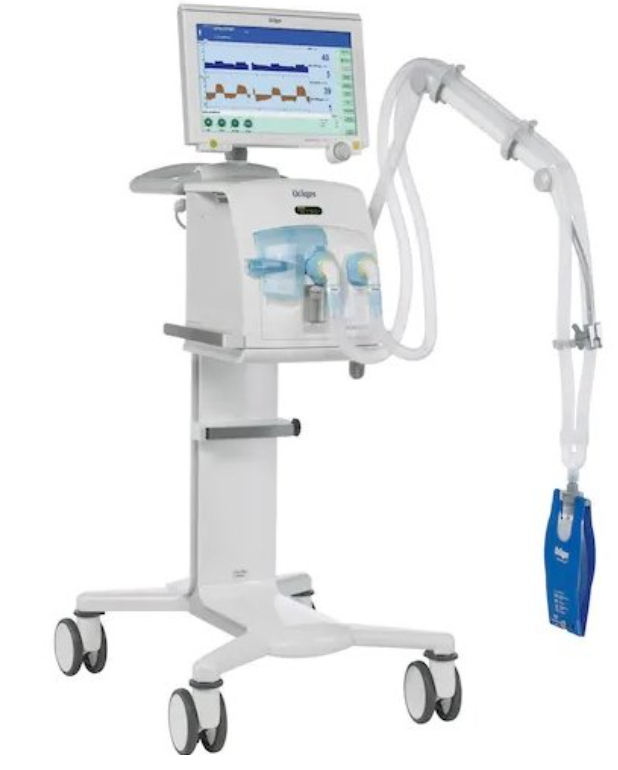
Features
Automatic weaning with SmartCare/PS
Automatic leak compensation
Versatile and scalable
High ventilation quality
Applications
Emergency Care & ICU
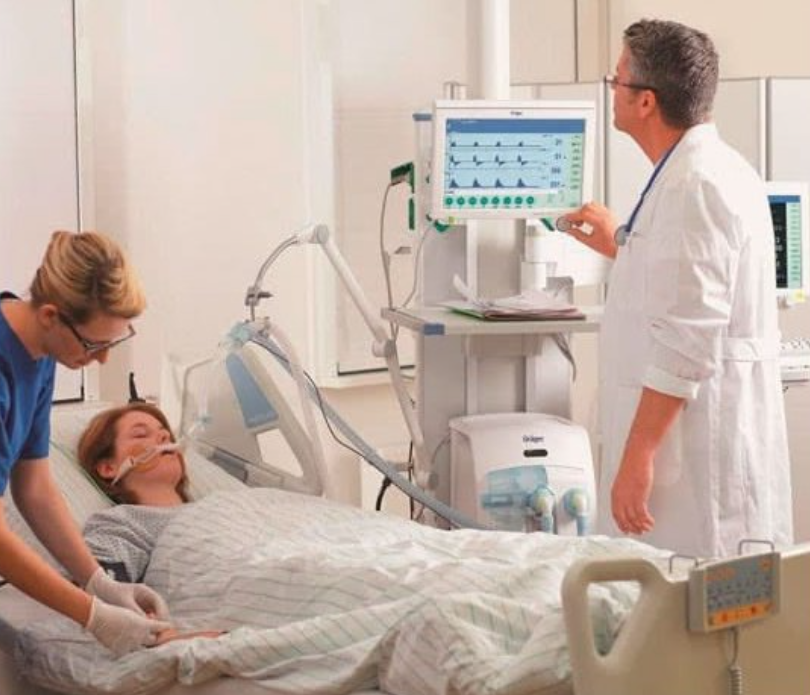
Specifications of Drager Evita V300 Ventilator
| Model Name/Number | Evita V300 |
| Patient Age Group | Adults, Pediatric, Neonates |
| Tidal Volume | Adults - 0.1 to 3.0 L, Pediatric - 0.02 to 0.3 L, Neonates 0.002 to 0.1 Volume controlled ventilation - VC-CMV, VC-SIMV, VC-AC, VC-MMV |
| Ventilation Modes | APRV, PC-PSV Support of spontaneous breathing ‒ SPN-CPAP/PS, SPN-CPAP/VS, SPN-CPAP, SPN-PPS Support of spontaneous breathing ‒ SPN-CPAP/PS, SPN-CPAP/VS, SPN-CPAP, SPN-PPS |
| Respiratory Rate | Adults - 0.5 to 98/min, Pediatric patients & Neonates - 0.5 to 150/min |
| Frequency | 50/60 Hz |
| Oxygen concentration | 21 to 100 Vol.% |
| Inspiratory Pressure | 1 to 95 mbar |
| PEEP/CPAP | 0 to 50 mbar |
| Inspiratory time | Adults - 0.11 to 10 sec, Pediatric Patients & Neonates - 0.1 to 10 sec, Airway Pressure - 0.1 to 30 sec |
| Expiratory time | 0.05 to 30 s |
| Inspiratory flow | Adults - 2 to 120 L/min, Pediatric patients & Neonates - 2 to 30 L/min |
Monitoring | |
| Volume Monitoring | High/Low |
| Disconnect alarm delay time | 0 to 60 seconds |
| Tachypnoea | High/Low |
Endotracheal Suction
| Reconnection detection | Automatic |
| Disconnection detection | Automatic |
| Initial Oxygen enrichment | Max. 3 minutes |
| Active suction phase | Max. 2 minutes |
| Final oxygen enrichment | Max. 2 minutes |
| Factor for pediatric patients and neonates | 1 to 2 |
| Supply system for spontaneous breathing and Psupp | Adaptive CPAP system with high initial flow |
| Additional Details | |
| Gas supply | 2.7 to 6.0 bar (O₂ gauge pressure), 2.7 to 6.0 bar (Air gauge pressure) |
| Special procedures | Suction maneuver, Manual inspiration/hold, Medication nebulization, P0.1, PEEPi, NIF |
| Device Compliance | Range 0 to 650 mL/mbar |
| Airway pressure measurement Display range | 60 to 120 mbar (Plateau pressure, Positive end-expiratory pressure, Peak inspiratory pressure, Mean airway pressure, Minimum airway pressure) |
| Tidal volume Measured Display range | 0 to 5,500 mL BTPS (Tidal Volume (VT), Inspiratory tidal volume (not leakagecompensated) of mandatory breaths (VTimand), Expiratory tidal volume (not leakagecompensated) of mandatory breaths (VTemand), Inspiratory tidal volume (not leakagecompensated) of spontaneous breaths (VTispon) |
| Respiratory rate Display range | 0/min to 300/min (Breathing frequency, Mandatory respiratory rate, Spontaneous breathing frequency) |
| Enhancements | AutoFlow / Volume Guarantee (VC-AC), Smart Pulmonary View , Automatic Tube Compensation (ATC), Mask Ventilation (NIV), CO₂ monitoring, Monitoring Plus, Additional Trends and Loops, SmartCare/PS 2.0, Automated clinical protocol in SPN-CPAP/PS, O2-therapy Special procedures, Suction maneuve |
| Therapy types | Invasive ventilation (Tube), Non-invasive ventilation (NIV) & O2-therapy |
| Inspiratory Pressure Limit | 2 to 100 mbar, Air Pressure - 1 to 95 mbar |
| Pressure Assis | 0 to 95 mbar |
| Rise time for pressure assist (Slope) | Adults & Pediatric patients - 0 to 2 s, Neonates 0 to 1.5 s |
| Automatic Tube Compensation | Inside tube diameter Endotracheal tube (ET) - Adults - 5 to 12 mm (0.2 to 0.47 inch), Pediatric patients - 2 to 8 mm (0.08 to 0.31 inch), Neonates 2 to 5 mm (0.08 to 0.2 inch), Tracheostoma tube (Trach.) - Adults - 5 to 12 mm (0.2 to 0.47 inch), Pediatric patients - 2.5 to 8 mm (0.1 to 0.31 inch), Degree of compensation - 0 to 100 % |
| Maximum time of low pressure level in APRV/PEF | 0.05 to 30 s |
| Expiratory Pressure | 0 to 50 mbar |
| Termination criterion (peak expiratory flow) Exp. term | 1 to 80% (PEF) |
| Proportional Pressure Support Flow Assist | Adults - 0 to 30 mbar/L/s, Pediatric patients - 0 to 100 mbar/L/s & Neonates - 0 to 300 mbar/L/s |
| Proportional Pressure Support Volume Assist | Adults - 0 to 100 mbar/L |
| Proportional Pressure Support corresponds to compliance compensation | 10,000 to 10 mL/mbar, Pediatric patients - 0 to 1,000 mbar/L, Neonates - 0 to 4,000 mbar/L, 1,000 to 0.3 mL/mbar |
| Oxygen Therapy | Continuous Flow - 2 to 50 L/min, O₂ concentration FiO₂ - 21 to 100 Vol% |
| Leakage Compensation | On/Off – On: full compensation active, Off: only trigger compensation active |
| Oxygen Measurement Display range | Inspiratory O₂ concentration (FiO₂) Range - 18 to 100 Vol% |
| CO₂ Measurement Display range | 0 to 100 mmHg (etCO₂) |
| Displayed Resistance | ange 0 to 1,000 mbar/ (L/s) |
| Leakage minute volume | Range 0 to 99 L/min BTPS |
| Rapid Shallow Breathing | Range 0 to 9,999 (/min/L) |
| Negative Inspiratory Force | Range -80 mbar to 0 mbar |
| Occlusion pressure | Range 0 to -25 mbar |
| Digital machine output | Digital output and input via an RS232 C interface, Drager MEDIBUS and MEDIBUS.X |
